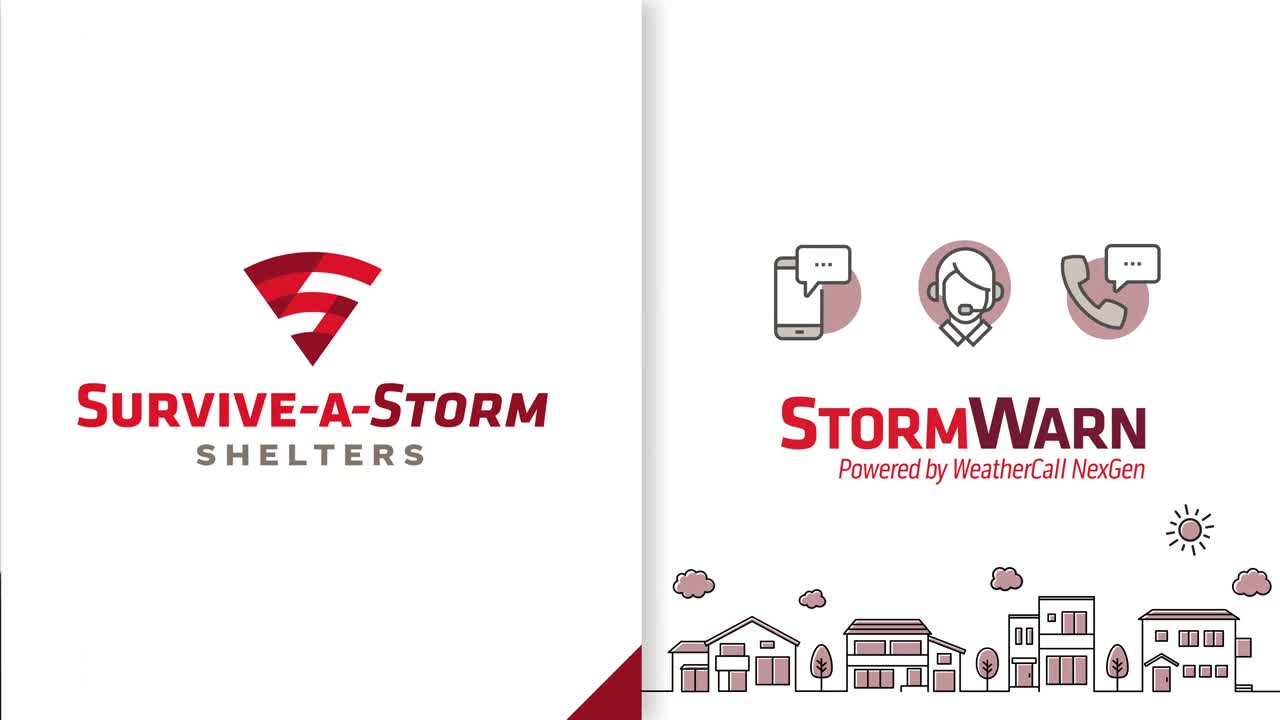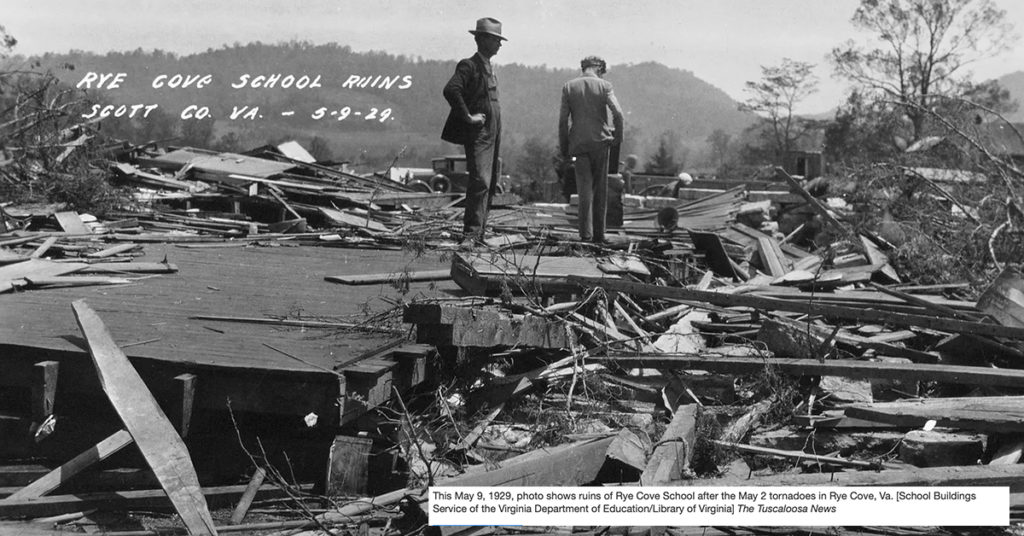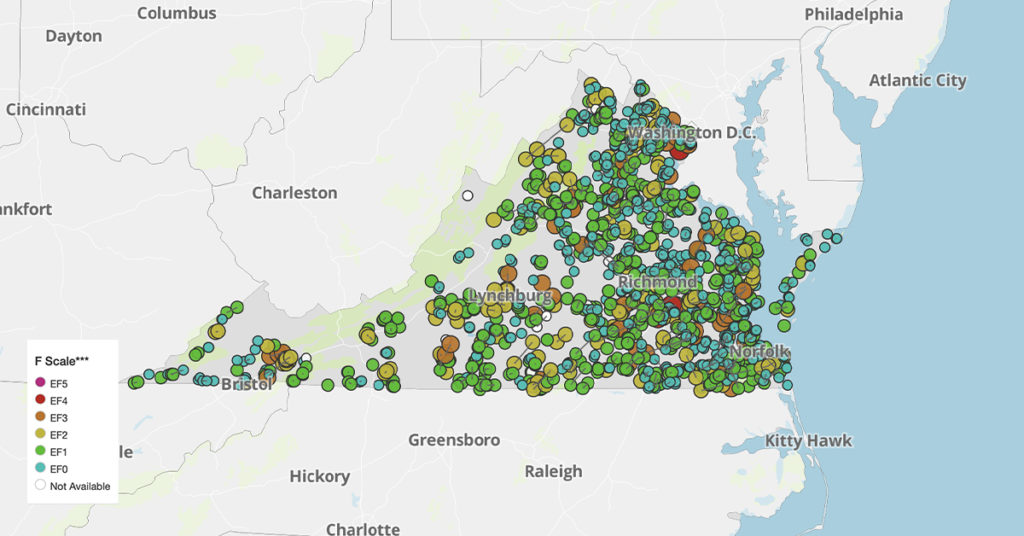- Virginia is most vulnerable to tornadoes in the spring and early summer months when warm, moist coastal air collides with cooler air from Canada, creating unstable conditions that can lead to severe thunderstorms and tornadoes. The most active months for tornadoes in Virginia are April, May, and June.
- The deadliest tornado in Virginia's history occurred on April 28, 2011, when an EF3 tornado struck the town of Glade Spring, killing three people and injuring dozens more.
- Another significant tornado outbreak occurred on April 16, 2011, when multiple tornadoes struck eastern Virginia, including an EF3 that caused extensive damage in the city of Suffolk.
- The strongest tornado on record in Virginia was an EF4 that struck the town of Colonial Heights on April 28, 2008, causing significant damage to homes and businesses.
- The most tornadoes recorded in a single day in Virginia is 17, which occurred on April 28, 2011.
- The town of Ivor, located in Southampton County, has been hit by more tornadoes than any other location in Virginia.
- Tornadoes have been reported in every county in Virginia, but the eastern part of the state is particularly vulnerable due to its proximity to the Atlantic Ocean and the Chesapeake Bay.
- Virginia has a tornado warning system in place that uses sirens to alert residents in affected areas.
Documented Virginia tornadoes since 1950
Preparing for Tornadoes in Virginia
Tornadoes can strike at any time, and they can cause significant damage to homes, businesses, and entire communities. While tornadoes are relatively rare in Virginia compared to some other states, the potential for devastation is still very real. That's why it's crucial for residents of Virginia to be prepared for tornadoes and to take steps to protect themselves and their property.
One of the most important ways to prepare is to have a tornado safety plan in place. This plan should include knowing where to take shelter in your home or workplace. It's also important to have an emergency kit with essential items such as water, non-perishable food, first-aid supplies, a flashlight, and a communication list of family or friends you would like to reach after a tornado
Another critical aspect of tornado preparation is staying informed. Residents of Virginia should monitor weather reports and pay attention to tornado watches and warnings issued by the National Weather Service. It's also a good idea to sign up for local emergency alerts to receive notifications about severe weather events in your area. Another great option is location-based tornado alerts, designed to let you know when it is time to take shelter, based on when your home is in danger.
In addition to having a plan and staying informed, it's essential to take steps to protect your property from tornado damage. This would include securing outdoor items, keeping branches trimmed and the yard free from debris. For personal safety, it is also a great idea to add a tornado shelter to your property. There are options available for both above-ground and underground, with shelters available that protect up to an EF5 level tornado. Safety in an above-ground tornado shelter is important to mention, since in coastal areas or other areas with a high water table, like much of Virginia, it can be impossible to seek shelter underground.
It's crucial to remember that tornadoes are unpredictable, so being prepared is the best way to stay safe and protect your family and property.

Tornado Shelters Near Me in Virginia
The Virginia Department of Emergency Management (VDEM) maintains a list of public tornado shelters in Virginia on its website. You can find the list by visiting the VDEM website and doing a search for "public shelters." (This information may change depending on the time of year.)
You can click on each icon to see the name and address of the shelter, as well as any notes or restrictions that may apply. It's important to note that not all counties in Virginia have public tornado shelters, so it's crucial to have a plan in place for where to take shelter in the event of a tornado.
In addition to the VDEM website, you can also contact your local emergency management agency for information on public tornado shelters in your area. Many counties and cities in Virginia have their own emergency management departments that can provide information on shelter locations and other tornado preparedness resources.
Keep in mind that on the day of a tornado, public tornado shelters may fill up quickly, so it's crucial to have a backup plan in place. This can include identifying sturdy buildings or structures in your area where you can take shelter, such as an interior room without windows, or a reinforced storm shelter.

Know when severe weather is about to strike and when it's time for you to take shelter with our StormWarn texting program.


Virginia Tornado Safety Tips
Tornadoes can strike suddenly and without warning, be prepared and know what to do if a tornado does occur. Here are a few tornado safety tips for residents of Virginia:
- Stay tuned to local news and weather reports to stay up-to-date on the latest tornado watches and warnings. Consider signing up for local emergency alerts on your phone or other mobile devices. Watch for your meteorologist to draw attention to the National Weather Service’s polygon area. If you’re home is in that area, it is time to get to the shelter!
- Develop a tornado emergency plan that includes a designated safe place to take shelter in your home or workplace, as well as a designated meeting spot for family members if you become separated.
- Be familiar with the layout of your community and identify the closest public tornado shelter in case you need to evacuate.
- Have an emergency kit ready with essential supplies such as water, non-perishable food, first-aid supplies, a flashlight, and extra batteries. If you shelter at home, keep the kit in your tornado shelter. If you shelter outside the home, have it ready to go and know where it is!
- If a tornado warning is issued, be prepared to take shelter in a safe place immediately. Go to your tornado shelter, or if you don’t have one, to the lowest level of your home or building and seek shelter in an interior room without windows, such as a closet or bathroom.
- Stay away from windows and exterior walls, which can shatter and cause injury.
- If you’re seeking shelter in a place that is not a designated tornado shelter, it is important to have the ability to protect your head. Use blankets, pillows, or sports/bike helmets to protect your head and neck from debris.
- Stay in your safe place until the tornado has passed and it is safe to leave. Do not go outside until the tornado warning has been lifted and it is safe to do so.
Virginia Tornado Shelter FAQs
Question: What is the process for seeking shelter in a tornado shelter in Virginia?
Answer: When a tornado warning is issued it is important to be prepared to take shelter immediately. When a tornado threat is imminent in your area it is important to seek shelter immediately. Follow the instructions provided by local authorities and proceed to your designated tornado shelter. If you are in a residential area without access to a public tornado shelter, seek shelter in a small, windowless, and centrally located room on the lowest floor of your home. The best option is a residential tornado shelter.
Question: Where are the public tornado shelters located in Virginia?
Answer: Public tornado shelters in Virginia are typically located in community centers, schools, government buildings, or designated storm shelter facilities. To find the specific locations of public tornado shelters in your area, contact your local emergency management agency or consult resources such as the Virginia Department of Emergency Management website. Your local news may also report on them.
Question: Are there any tornado shelters that are handicap accessible in Virginia?
Answer: Yes, efforts are made to ensure that tornado shelters in Virginia are accessible to individuals with disabilities. Some public tornado shelters are designed to accommodate people with mobility challenges and provide features such as wheelchair ramps, accessible entrances, and designated spaces for individuals with disabilities.
Question: How many tornado shelters are there in Virginia?
Answer: The number of tornado shelters in Virginia can vary across different regions of the state. The availability and quantity of tornado shelters depend on factors such as population density, community resources, and local initiatives. For specific information on the number of tornado shelters in your area, it is best to contact your local emergency management agency or refer to resources provided by the Virginia Department of Emergency Management.
Question: What is the capacity of tornado shelters in Virginia?
Answer: The capacity of tornado shelters in Virginia varies based on their size, design, and intended use. Tornado shelters can range from small residential shelters designed to accommodate a few individuals to larger community shelters capable of housing several dozen people. The capacity of each tornado shelter is determined during the design and construction process and should be clearly indicated at the shelter location.
Question: What are the requirements for opening a public tornado shelter in Virginia?
Answer: Requirements for opening a tornado shelter in Virginia can vary depending on local regulations and building codes. Tornado shelter construction and operation are subject to specific guidelines to ensure structural integrity and safety. It is important to consult with local authorities, building code officials, and relevant agencies to understand the specific requirements for opening a public tornado shelter in your area.
Question: What is the difference between a community tornado shelter and a residential tornado shelter in Virginia?
Answer: A community tornado shelter in Virginia is typically a larger facility designed to accommodate a significant number of people from the surrounding area. These shelters are often located in public buildings and community centers and are intended to provide shelter for a broad range of residents during severe weather events. Residential tornado shelters, on the other hand, are designed for individual households and are often built within or adjacent to private residences. These shelters offer protection primarily for the residents of a specific home or property.
Question: How are tornado shelters maintained and inspected in Virginia?
Answer: Tornado shelters in Virginia are typically subject to maintenance and inspection protocols to ensure their structural integrity and functionality. Maintenance may involve regular inspections, upkeep of ventilation systems, testing of emergency communication equipment, and addressing any necessary repairs. The specific maintenance and inspection requirements may vary.



